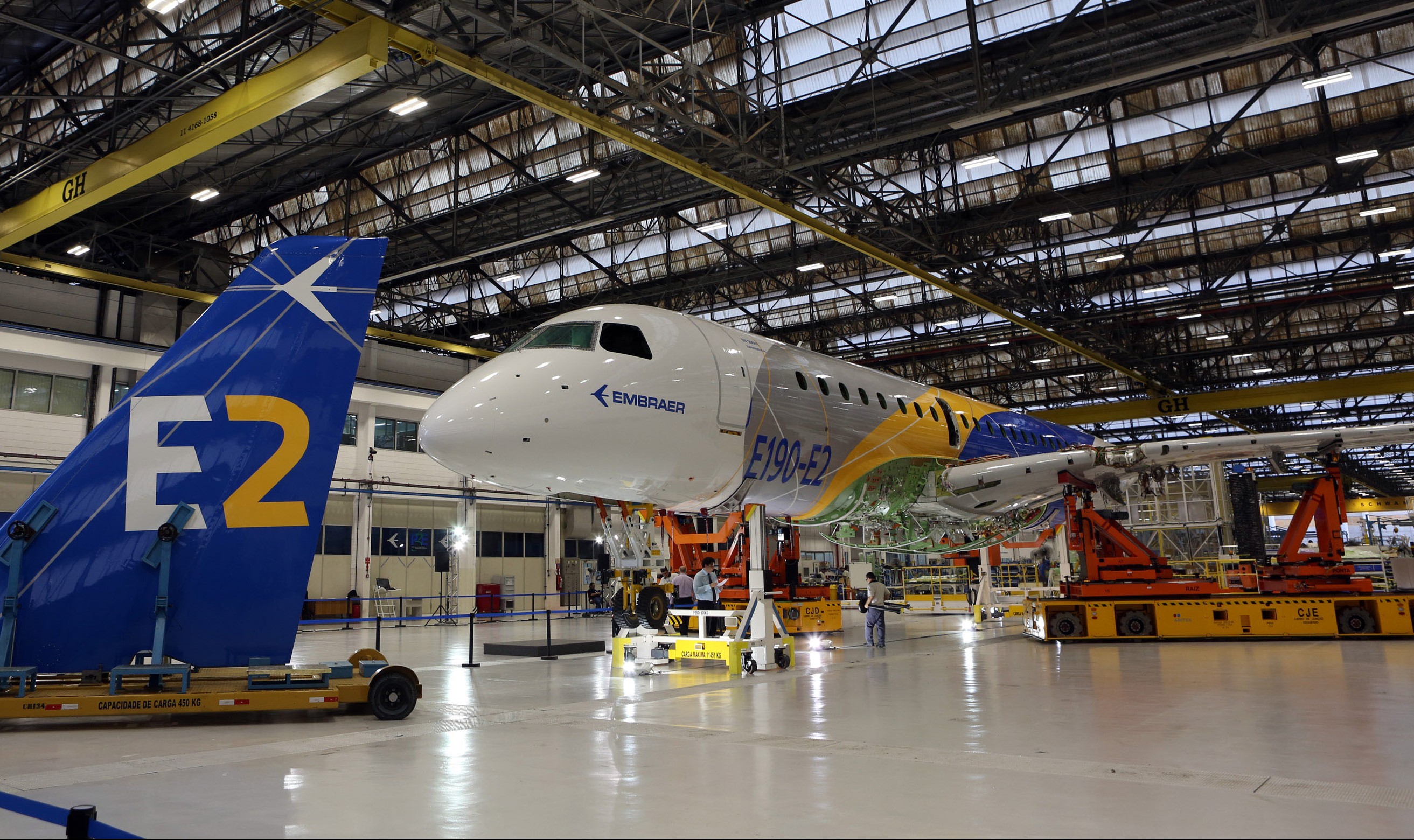The Embraer E190-E2 has gained type certification from the Brazilian Civil Aviation Agency (ANAC), the U.S. Federal Aviation Administration (FAA) and the European Aviation Safety Agency (EASA). A ceremony held in São Paulo Wednesday marked the occasion, which Embraer called the first time an aircraft program as complex as the E2 received approval from the three major worldwide certification authorities simultaneously.
Certification of the E190-E2 opens the way for delivery to launch customer Wideroe of Norway, which plans to start service with the first of its 114-seat jets on April 24. Launched in 2013 along with the larger E195-E2 and smaller E175-E2, the E190-E2 gained certification in 56 months, precisely on schedule. Four flight-test articles clocked more than 2,000 hours in the air since first flight in May of 2016 and Embraer conducted some 45,000 hours of tests in laboratories with rigs dedicated to aircraft avionics, flight controls, and electrical, hydraulic, and environmental systems.
"Having had the pleasure of launching the E-Jets E2 family back in 2013, it is very emotional for me to see the E190-E2 reach type certification today, on schedule and on budget," said Embraer president and CEO Paulo Cesar de Souza e Silva. "Our development teams have once again excelled in their creativity, dedication, and competence. Not only all development targets were met, but several important ones like fuel burn, performance, noise, and maintenance costs came in better than originally specified."
In January Embraer announced a series of positive adjustments to the E190-E2’s performance and operating cost profile. Aerodynamic improvements resulted in a decrease in the E190-E2"™s fuel burn rate by 17.3 percent compared with the E190-E1, as opposed to the original estimate of 16 percent. The company attributes the improvement to better-than-expected performance of the new wing, and aerodynamically "clean" fuselage and the "smart" use of the airplane"™s fly-by-wire controls. It also cited a weight control program that allowed it to achieve its weight goals precisely on target, flap slap and slat optimization during the flight test campaign and drag reduction on key elements for takeoff performance such as landing gear.
Hot-and-high improvements have resulted in an increase in range out of London City Airport to 2,200 nautical miles, allowing the E190-E2 to reach markets in Russia, Egypt, and Turkey. The company expects to gain certification for London City within two years, explained program director Fernando Antonio Oliveira, who named E1 operators BA Cityflier, KLM Cityhopper, and Austrian Airlines as likely candidates for flying the E2 in and out of LCY. From Mexico City, range increases to 1,600 nautical miles, extending the E190"™s reach to Canada and South America. Embraer also sees a lot of potential for the E2 in hot-and-high markets in China, where it already claims an 80 percent share of the market for airplanes in the 190"™s seating category. The company now counts five Chinese operators flying 100 aircraft…



